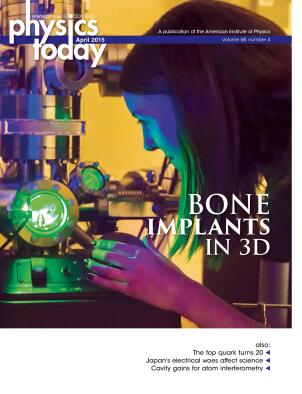Alternative hypotheses for making the Moon
DOI: 10.1063/PT.3.2731
The article “Making the Moon” by Dave Stevenson (Physics Today, November 2014, page 32
A paper by Edward Belbruno and J. Richard Gott III, which Stevenson did not cite, provides a truly compelling case for the low-energy, Mars-sized impactor scenario for the formation of the Moon. 1 Belbruno and Gott posit that a large body could have formed at one of the two stable Lagrange points (dubbed L4 and L5) that are co-orbital with Earth, grown to a substantial size, and eventually gotten kicked loose by interactions with other planetesimals. Thus that large body could have been put in a so-called horseshoe orbit in conjunction with Earth and eventually gotten perturbed to the point that it impacted Earth.
The scenario above makes it easy to reconcile the angular momentum, Earth-matching oxygen-isotope abundance, and lack of iron core in the Moon. Also, Lagrange and horseshoe orbits are common. Jupiter has large agglomerations of asteroids at its two stable Lagrange points. Saturn’s moons Janus and Epimetheus are in a horseshoe orbit around the planet. And even Earth has an asteroid (AA29) in a horseshoe orbit with it.
The scenario put forward by Belbruno and Gott explains all the hard-to-reconcile observations.
References
1. E. Belbruno, J. R. Gott III, Astron. J. 129, 1724 (2005).
More about the Authors
Robert Vanderbei. (rvdb@princeton.edu) Princeton University, Princeton, New Jersey.
